
目录
一、引言
pipeline(管道)是huggingface transformers库中一种极简方式使用大模型推理的抽象,将所有大模型分为音频(audio)、计算机视觉(computer vision)、自然语言处理(nlp)、多模态(multimodal)等4大类,28小类任务(tasks)。共计覆盖32万个模型
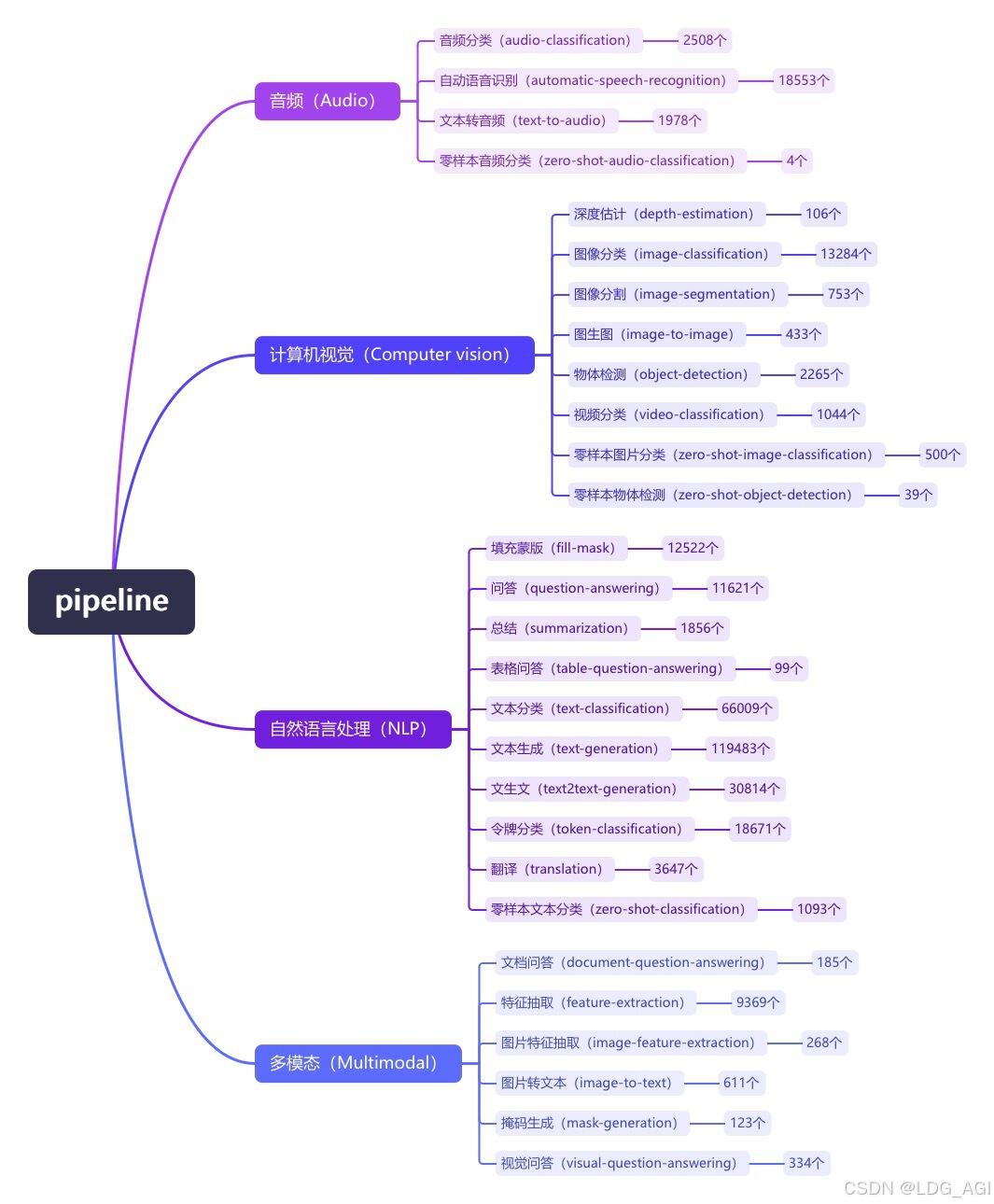
今天介绍audio音频的第一篇,音频分类(audio-classification),在huggingface库内共有2500个音频分类模型。
二、音频分类(audio-classification)
2.1 概述
音频分类,顾名思义就是将音频打标签或分配类别的任务。主要应用场景有语音情绪分类、语音命令分类、说话人分类、音乐风格判别、语言判别等。
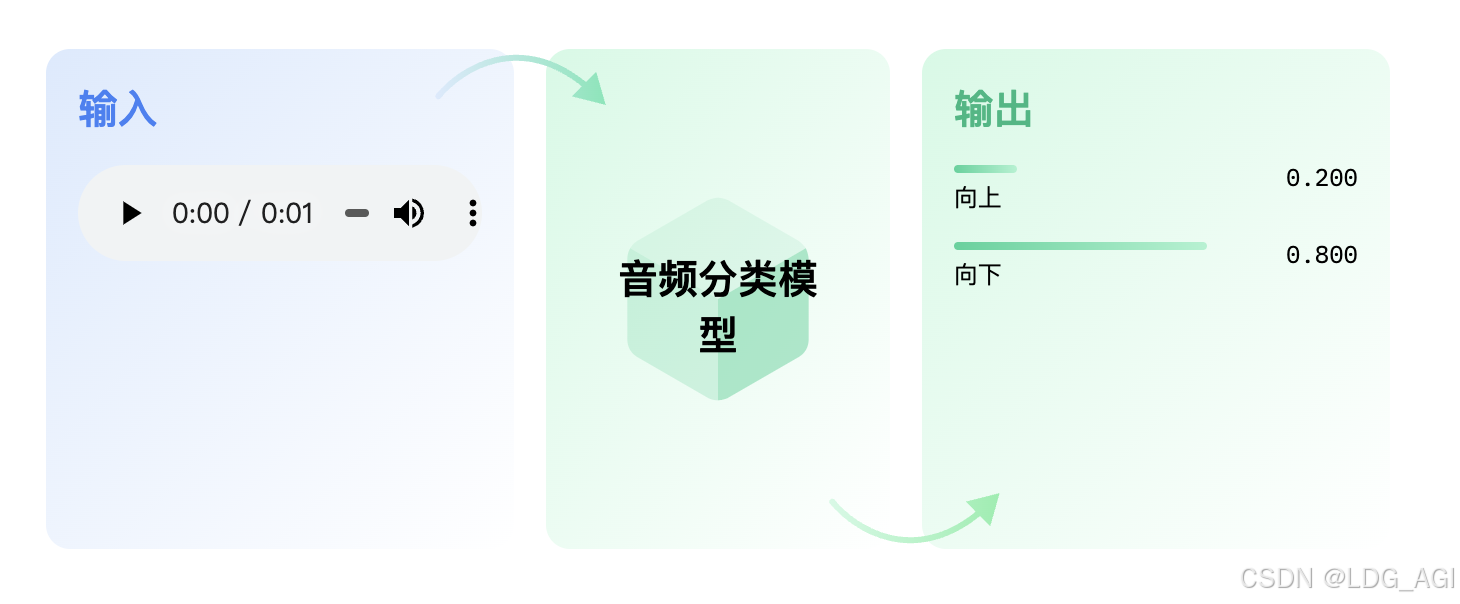
2.2 技术原理
音频分类,主要思想就是将音频的音谱切分成25ms-60ms的片段,通过cnn等卷积神经网络模型提取特征并进行embedding化,基于transformer与文本类别对齐训练。下面介绍2个代表模型:
2.2.1 wav2vec 2.0模型
wav2vec 2.0是 meta在2020年发表的无监督语音预训练模型。它的核心思想是通过向量量化(vector quantization,vq)构造自建监督训练目标,对输入做大量掩码后利用对比学习损失函数进行训练。模型结构如图,基于卷积网络(convoluational neural network,cnn)的特征提取器将原始音频编码为帧特征序列,通过 vq 模块把每帧特征转变为离散特征 q,并作为自监督目标。同时,帧特征序列做掩码操作后进入 transformer [5] 模型得到上下文表示 c。最后通过对比学习损失函数,拉近掩码位置的上下文表示与对应的离散特征 q 的距离,即正样本对。
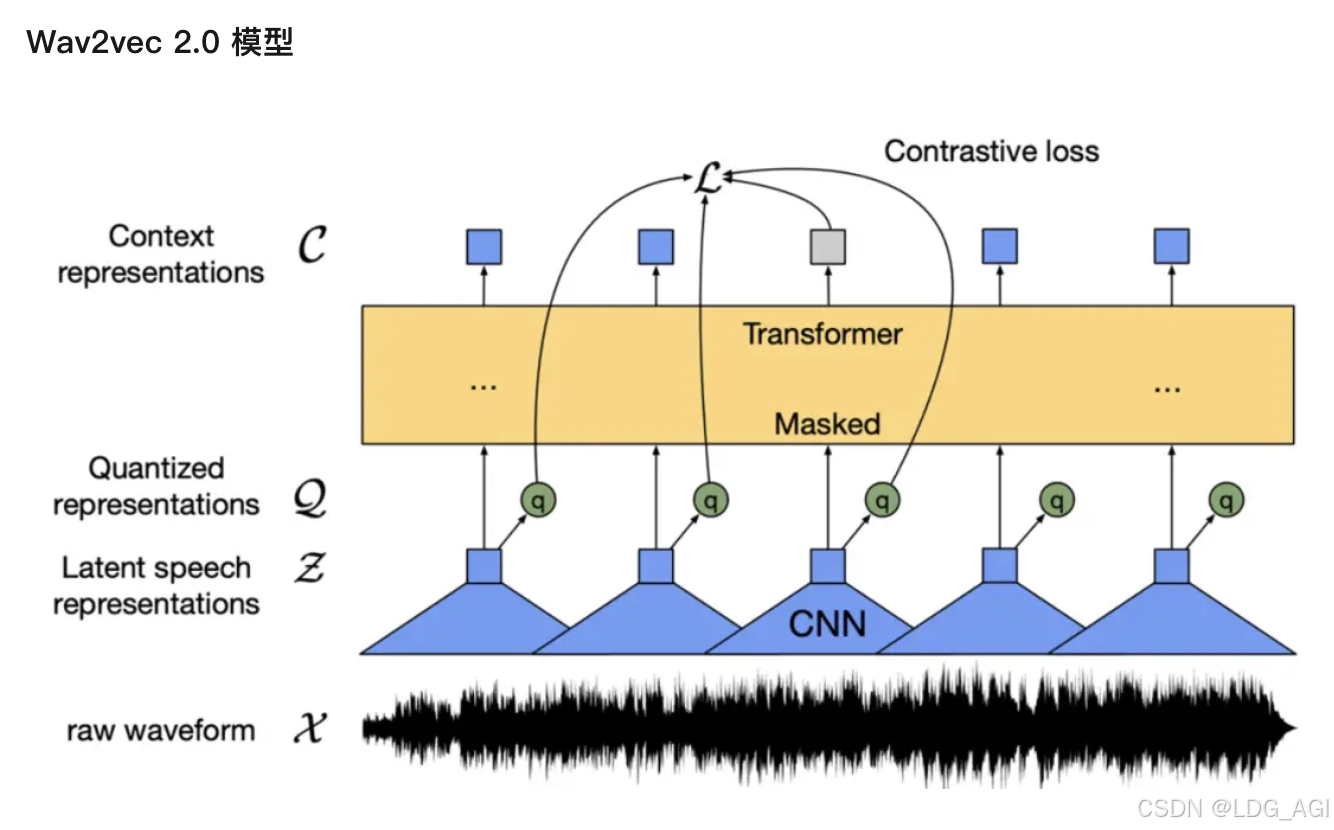
2.2.1 hubert模型
hubert是meta在2021年发表的模型,模型结构类似 wav2vec 2.0,不同的是训练方法。wav2vec 2.0 是在训练时将语音特征离散化作为自监督目标,而 hubert 则通过在 mfcc 特征或 hubert 特征上做 k-means 聚类,得到训练目标。hubert 模型采用迭代训练的方式,base 模型第一次迭代在 mfcc 特征上做聚类,第二次迭代在第一次迭代得到的 hubert 模型的中间层特征上做聚类,large 和 xlarge 模型则用 base 模型的第二次迭代模型提取特征做聚类。从原始论文实验结果来看,hubert 模型效果要优于 wav2vec 2.0,特别是下游任务有监督训练数据极少的情况,如 1 小时、10 分钟。
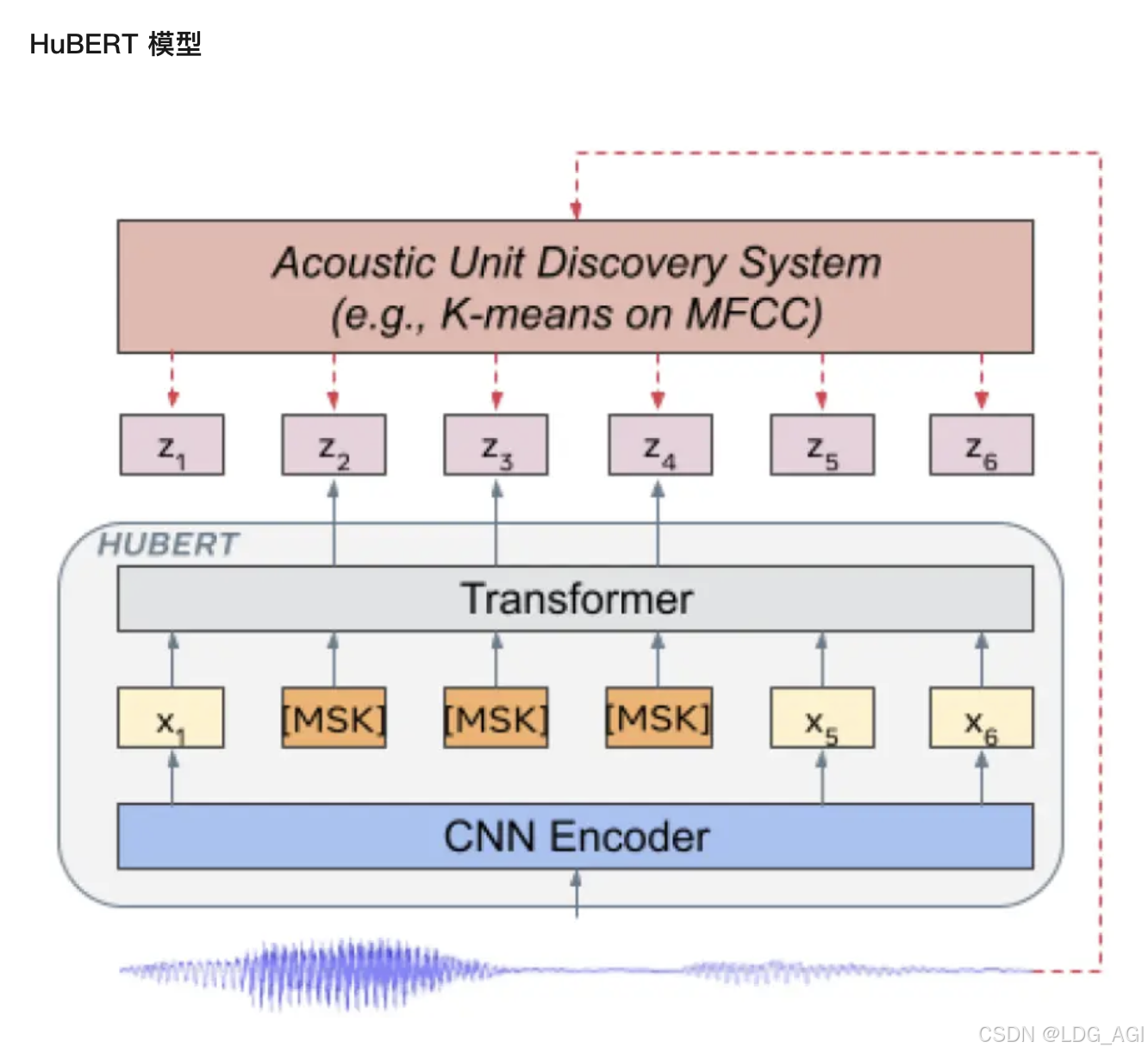
2.3 pipeline参数
2.3.1 pipeline对象实例化参数
2.3.2 pipeline对象使用参数
2.4 pipeline实战
2.4.1 指令识别(默认模型)
pipeline对于audio-classification的默认模型时superb/wav2vec2-base-superb-ks,使用pipeline时,如果仅设置task=audio-classification,不设置模型,则下载并使用默认模型。
import os
os.environ["hf_endpoint"] = "https://hf-mirror.com"
os.environ["cuda_visible_devices"] = "2"
from transformers import pipeline
speech_file = "./output_video_enhanced.mp3"
pipe = pipeline(task="audio-classification")
result = pipe(speech_file)
print(result)这是一个上下左右yes及no的指令识别模型,感觉像是训练动物。
[{'score': 0.9988580942153931, 'label': '_unknown_'}, {'score': 0.000909291033167392, 'label': 'down'}, {'score': 9.889943612506613e-05, 'label': 'no'}, {'score': 7.015655864961445e-05, 'label': 'yes'}, {'score': 5.134344974067062e-05, 'label': 'stop'}]2.4.2 情感识别
我们指定模型为情感识别模型ehcalabres/wav2vec2-lg-xlsr-en-speech-emotion-recognition,具体代码为:
import os
os.environ["hf_endpoint"] = "https://hf-mirror.com"
os.environ["cuda_visible_devices"] = "2"
from transformers import pipeline
speech_file = "./output_video_enhanced.mp3"
pipe = pipeline(task="audio-classification",model="ehcalabres/wav2vec2-lg-xlsr-en-speech-emotion-recognition")
result = pipe(speech_file)
print(result)输入为一段mp3格式的语音,输出为
[{'score': 0.13128453493118286, 'label': 'angry'}, {'score': 0.12990005314350128, 'label': 'calm'}, {'score': 0.1262471228837967, 'label': 'happy'}, {'score': 0.12568499147891998, 'label': 'surprised'}, {'score': 0.12327362596988678, 'label': 'disgust'}]2.5 模型排名
在huggingface上,我们筛选音频分类模型,并按下载量从高到低排序:
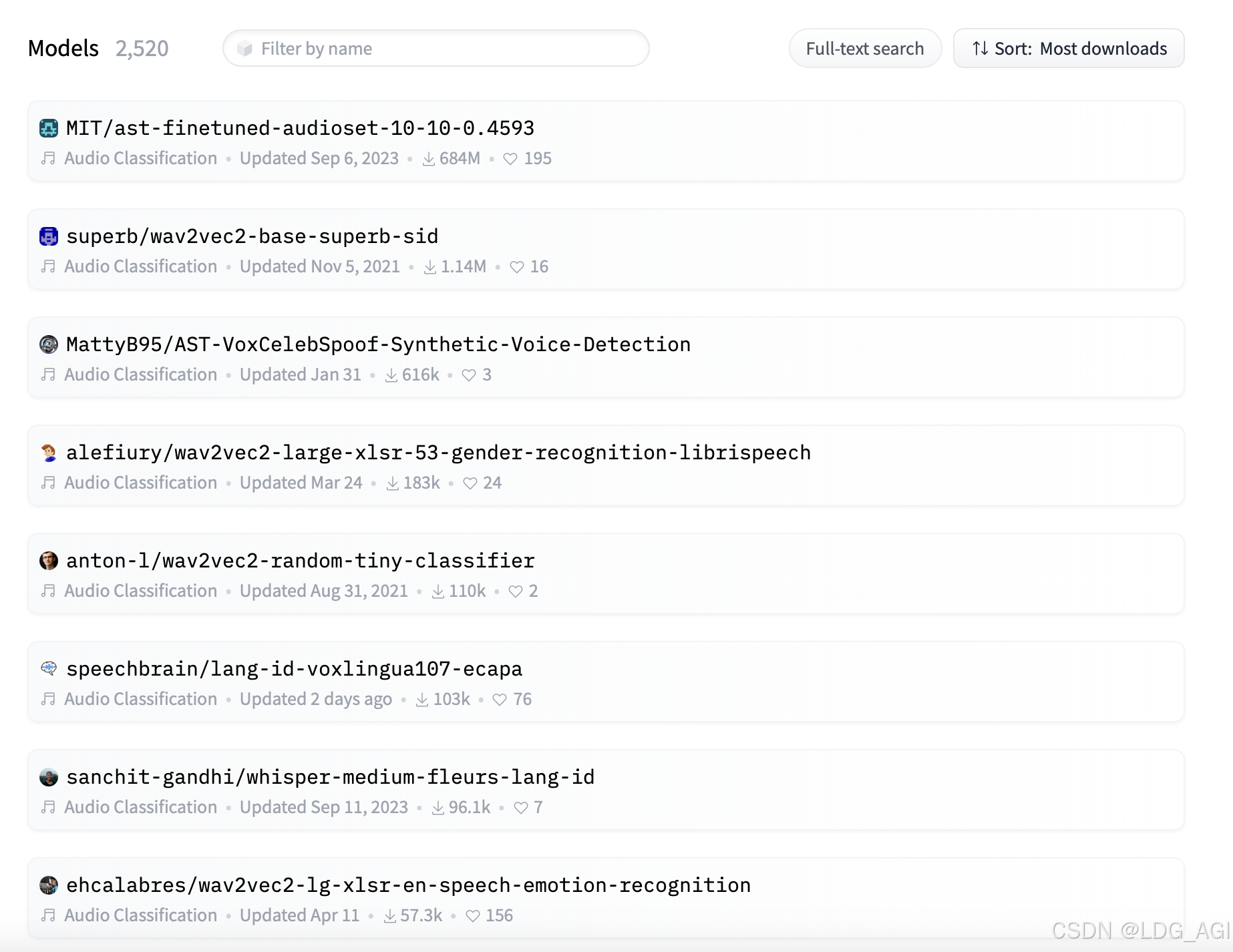
三、总结
本文对transformers之pipeline的音频分类(audio-classification)从概述、技术原理、pipeline参数、pipeline实战、模型排名等方面进行介绍,读者可以基于pipeline使用文中的代码极简的进行音频分类推理,应用于音频情感识别、音乐曲风判断等业务场景。
期待您的3连+关注,如何还有时间,欢迎阅读我的其他文章:
《transformers-pipeline概述》
【人工智能】transformers之pipeline(概述):30w+大模型极简应用
《transformers-pipeline 第一章:音频(audio)篇》
【人工智能】transformers之pipeline(一):音频分类(audio-classification)
【人工智能】transformers之pipeline(二):自动语音识别(automatic-speech-recognition)
【人工智能】transformers之pipeline(三):文本转音频(text-to-audio)
【人工智能】transformers之pipeline(四):零样本音频分类(zero-shot-audio-classification)
《transformers-pipeline 第二章:计算机视觉(cv)篇》
【人工智能】transformers之pipeline(五):深度估计(depth-estimation)
【人工智能】transformers之pipeline(六):图像分类(image-classification)
【人工智能】transformers之pipeline(七):图像分割(image-segmentation)
【人工智能】transformers之pipeline(八):图生图(image-to-image)
【人工智能】transformers之pipeline(九):物体检测(object-detection)
【人工智能】transformers之pipeline(十):视频分类(video-classification)
【人工智能】transformers之pipeline(十一):零样本图片分类(zero-shot-image-classification)
【人工智能】transformers之pipeline(十二):零样本物体检测(zero-shot-object-detection)
《transformers-pipeline 第三章:自然语言处理(nlp)篇》
【人工智能】transformers之pipeline(十三):填充蒙版(fill-mask)
【人工智能】transformers之pipeline(十四):问答(question-answering)
【人工智能】transformers之pipeline(十五):总结(summarization)
【人工智能】transformers之pipeline(十六):表格问答(table-question-answering)
【人工智能】transformers之pipeline(十七):文本分类(text-classification)
【人工智能】transformers之pipeline(十八):文本生成(text-generation)
【人工智能】transformers之pipeline(十九):文生文(text2text-generation)
【人工智能】transformers之pipeline(二十):令牌分类(token-classification)
【人工智能】transformers之pipeline(二十一):翻译(translation)
【人工智能】transformers之pipeline(二十二):零样本文本分类(zero-shot-classification)
《transformers-pipeline 第四章:多模态(multimodal)篇》
【人工智能】transformers之pipeline(二十三):文档问答(document-question-answering)
【人工智能】transformers之pipeline(二十四):特征抽取(feature-extraction)
【人工智能】transformers之pipeline(二十五):图片特征抽取(image-feature-extraction)
【人工智能】transformers之pipeline(二十六):图片转文本(image-to-text)
【人工智能】transformers之pipeline(二十七):掩码生成(mask-generation)
【人工智能】transformers之pipeline(二十八):视觉问答(visual-question-answering)




发表评论